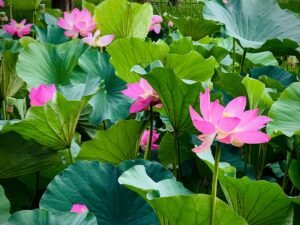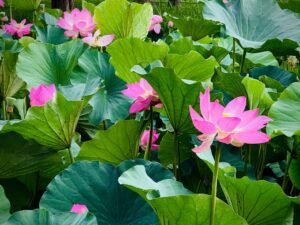

A Guide to Using Loanwords (Gairaigo) in Everyday Japanese
Loanwords, or “gairaigo” as they are known in Japanese, are words borrowed from other languages and adapted into the Japanese lexicon. This phenomenon is not unique to Japanese; many languages incorporate foreign terms to enrich their vocabulary. However, the Japanese language has a particularly fascinating relationship with loanwords, reflecting the country’s historical interactions with various cultures.
The influx of loanwords into Japanese can be traced back to the Meiji Restoration in the late 19th century when Japan opened its doors to the West and began to modernise rapidly. This period marked a significant shift in the language, as new concepts and technologies necessitated the adoption of foreign terms. The incorporation of loanwords into Japanese serves multiple purposes.
It allows speakers to express modern ideas and innovations that may not have existed in traditional Japanese. Furthermore, loanwords often carry a sense of novelty and trendiness, making them appealing to younger generations. As a result, gairaigo has become an integral part of contemporary Japanese, permeating various aspects of daily life, from fashion and technology to food and entertainment.
Understanding the role of loanwords in Japanese is essential for anyone looking to grasp the nuances of the language and its cultural context. Learn Japanese at the Norwegian Language School.
Table of Contents
ToggleSummary
- Loanwords in Japanese are words borrowed from other languages, mainly English, and have become an integral part of the Japanese language.
- Loanwords are incorporated into Japanese through adaptation of pronunciation, spelling, and sometimes meaning to fit the phonetic and grammatical structure of the language.
- Common loanwords used in everyday Japanese include words related to technology, food, fashion, and entertainment, among others.
- When using loanwords in Japanese, it is important to consider the appropriateness of the word in the given context and to be mindful of potential miscommunication.
- The pronunciation of loanwords in Japanese may differ from the original language, and it is important to learn the correct pronunciation to avoid misunderstandings.
How Loanwords are Incorporated into Japanese
The process of incorporating loanwords into Japanese involves several steps, primarily focusing on phonetic adaptation. When a foreign word is borrowed, it is typically transliterated into katakana, one of the three writing systems used in Japanese. This script is specifically designated for foreign words, onomatopoeia, and scientific terms.
For instance, the English word “computer” becomes “コンピュータ” (konpyūta) in katakana. This phonetic transformation often results in a pronunciation that may differ significantly from the original term, reflecting the unique phonological constraints of the Japanese language. Moreover, loanwords are not merely direct translations; they often undergo semantic shifts as well.
A borrowed term may take on new meanings or connotations within the context of Japanese culture. For example, the English word “mansion” refers to a large, luxurious house in English-speaking countries, but in Japan, “マンション” (manshon) typically refers to a multi-unit apartment building. This divergence highlights the importance of understanding both the linguistic and cultural implications of loanwords when learning Japanese.
Common Loanwords Used in Everyday Japanese

In everyday conversation, numerous loanwords have become commonplace among Japanese speakers. These terms often relate to technology, fashion, food, and lifestyle, reflecting contemporary trends and global influences. For instance, “テレビ” (terebi) for television, “バス” (basu) for bus, and “コーヒー” (kōhī) for coffee are all examples of gairaigo that have seamlessly integrated into daily vernacular.
Such words are so widely used that many native speakers may not even recognise them as foreign. Additionally, loanwords can also be found in popular culture, particularly in music and fashion. Terms like “アイドル” (aidoru) for idol and “ファッション” (fasshon) for fashion are frequently used in discussions about entertainment and style.
The prevalence of these loanwords illustrates how deeply intertwined they are with modern Japanese identity and lifestyle. As learners of the language engage with these terms, they gain insight into contemporary Japanese culture and social dynamics.
Tips for Using Loanwords Appropriately
While loanwords can enhance communication in Japanese, it is essential to use them appropriately to avoid misunderstandings. One key tip is to be mindful of context; certain loanwords may be more suitable in casual conversations than in formal settings. For example, while using gairaigo might be perfectly acceptable among friends discussing pop culture, it may be less appropriate in a business meeting where traditional Japanese vocabulary is preferred.
Another important consideration is pronunciation. Since many loanwords are adapted from foreign languages, they may not sound exactly like their original counterparts. Therefore, learners should practice the correct pronunciation to ensure clarity when speaking.
Listening to native speakers and mimicking their intonation can be an effective way to master this aspect of using loanwords. Additionally, being aware of regional variations in pronunciation can further enhance communication skills.
Pronunciation of Loanwords in Japanese
Pronunciation plays a crucial role in effectively using loanwords in Japanese. The phonetic structure of Japanese differs significantly from that of many Western languages, which can lead to challenges when pronouncing borrowed terms. For instance, certain sounds present in English may not exist in Japanese, necessitating adaptations that can alter the original pronunciation.
As a result, learners must familiarise themselves with the katakana syllabary and practice articulating these sounds accurately. Moreover, stress patterns differ between languages; while English often emphasises certain syllables within words, Japanese tends to have a more even distribution of stress across syllables. This can lead to further discrepancies when pronouncing loanwords derived from English or other languages.
To improve pronunciation skills, learners should engage with audio resources or language exchange partners who can provide feedback on their articulation.
The Evolution of Loanwords in Japanese

The evolution of loanwords in Japanese reflects broader societal changes and cultural exchanges over time. Initially dominated by Chinese influences during the Heian period, the Japanese language began incorporating Western terms during the Meiji era as Japan sought to modernise and engage with global powers. This shift marked a significant turning point in the linguistic landscape of Japan, as new technologies and ideas necessitated the adoption of foreign vocabulary.
In recent years, the pace of loanword incorporation has accelerated due to globalisation and advancements in technology. The rise of social media and digital communication has facilitated the rapid spread of new terms across cultures. As a result, contemporary Japanese continues to evolve with an influx of English-based gairaigo that reflects current trends and innovations.
This ongoing evolution highlights the dynamic nature of language and its ability to adapt to changing cultural contexts.
Using Loanwords in Different Contexts
Understanding how to use loanwords appropriately across different contexts is vital for effective communication in Japanese. In casual settings, such as conversations with friends or peers, gairaigo can add a modern flair to discussions and help convey contemporary ideas more succinctly. For instance, using terms like “カフェ” (kafe) for café or “スマホ” (sumaho) for smartphone can make conversations feel more relatable and current.
Conversely, in formal situations such as business meetings or academic discussions, it is often advisable to use traditional Japanese vocabulary instead of relying heavily on loanwords. This approach demonstrates respect for cultural norms and ensures clarity when discussing complex topics. Striking a balance between using gairaigo and traditional terms is essential for effective communication across various contexts.
The Influence of Loanwords on Japanese Language and Culture
Loanwords have significantly influenced both the Japanese language and its culture over time. The incorporation of gairaigo has enriched the vocabulary available to speakers, allowing for more nuanced expressions of modern concepts and ideas. This linguistic expansion reflects Japan’s engagement with global culture and its willingness to embrace new influences while maintaining its unique identity.
Culturally, loanwords have also played a role in shaping trends and lifestyles within Japan. The popularity of Western fashion, music, and technology has led to an increased use of related gairaigo in everyday conversation. As a result, these borrowed terms have become symbols of modernity and globalisation within Japanese society.
Understanding this influence is crucial for learners seeking to navigate contemporary cultural landscapes effectively.
Avoiding Miscommunication with Loanwords
While loanwords can enhance communication, they also pose potential pitfalls that learners must navigate to avoid miscommunication. One common issue arises from semantic shifts; as previously mentioned, some borrowed terms may take on different meanings within the context of Japanese culture compared to their original language. Being aware of these nuances is essential for effective communication.
Additionally, learners should be cautious about overusing loanwords or relying on them exclusively when speaking Japanese. While gairaigo can add flair to conversations, excessive use may lead to misunderstandings or alienation among native speakers who may prefer traditional vocabulary in certain contexts. Striking a balance between using loanwords and traditional terms will help learners communicate more effectively while respecting cultural norms.
Embracing the Diversity of Loanwords in Japanese
Embracing the diversity of loanwords in Japanese offers learners an opportunity to engage more deeply with the language and its cultural context. By exploring various gairaigo from different languages—such as English, French, German, and even Portuguese—students can gain insight into Japan’s historical interactions with these cultures. This exploration not only enriches vocabulary but also fosters a greater appreciation for the complexities of language evolution.
Moreover, understanding the diverse origins of loanwords can enhance learners’ cultural competence when interacting with native speakers. Recognising that certain terms may carry specific connotations or cultural significance allows for more meaningful conversations and connections within Japanese society. Embracing this diversity ultimately contributes to a more holistic understanding of both the language and its cultural landscape.
The Future of Loanwords in Japanese Language
As Japan continues to navigate an increasingly globalised world, the future of loanwords in the language remains dynamic and evolving. The rapid pace of technological advancement and cultural exchange suggests that new gairaigo will continue to emerge as society adapts to changing trends and innovations. This ongoing evolution presents both challenges and opportunities for learners seeking to stay abreast of contemporary language use.
Furthermore, as younger generations increasingly engage with global culture through social media and digital platforms, their preferences for certain loanwords may shape linguistic trends moving forward. This generational shift could lead to new adaptations or even entirely new terms being adopted into everyday conversation. Ultimately, the future of loanwords in Japanese will reflect broader societal changes while continuing to enrich the language’s vibrant tapestry.
In conclusion, understanding loanwords in Japanese provides valuable insights into both the language itself and its cultural context. As learners navigate this fascinating aspect of Japanese linguistics, they will find that embracing gairaigo not only enhances their communication skills but also deepens their appreciation for Japan’s rich cultural heritage. For those interested in mastering these nuances further, enrolling in specialised courses at institutions like NLS Norwegian Language School can offer tailored instruction on this intriguing subject matter alongside comprehensive language training.
Ready to speak Japanese? Enroll for Japanese classes at the NLS Norwegian Language School!
If you want to learn Norwegian, you can register for classes here. We look forward to hearing from you and helping you become fluent in Norwegian.





